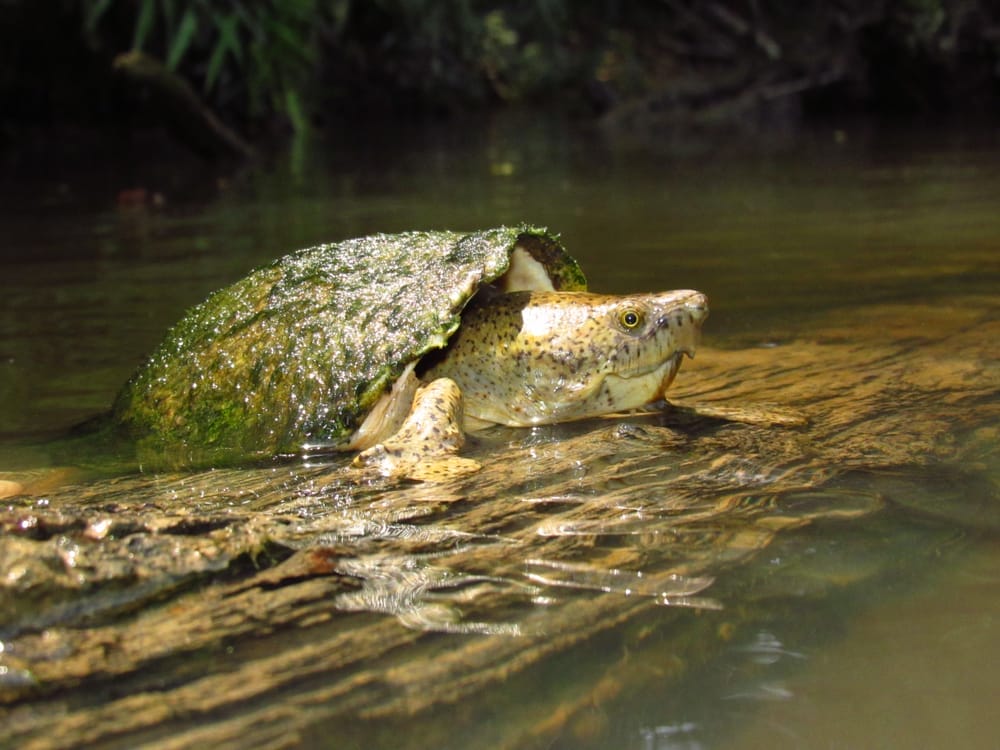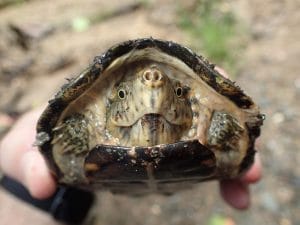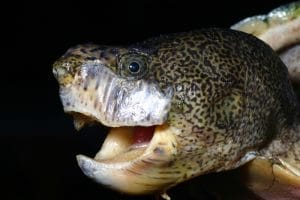Sternotherus carinatus (Razor-backed Musk Turtle)
Home > Turtle Database > Sternotherus carinatus (Razor-backed Musk Turtle)

Sternotherus carinatus, commonly known as the Razor-backed Musk Turtle, is a small freshwater turtle named for the distinct sharp ridge running along its shell. Found in slow-moving waters of the southeastern United States, this species is secretive and primarily aquatic, rarely basking outside the water.
Native To These Regions
Arkansas (USA), Louisiana (USA), Mississippi (USA), Oklahoma (USA), Texas (USA)Native Turtle Species Map – Find Turtles by Region
Scientific Classification
Kingdom: Animalia
Phylum: Chordata
Class: Reptilia
Order: Testudines
Family: Kinosternidae
Genus: Sternotherus
Species: Sternotherus carinatus
Common Names
Razor-backed Musk Turtle
This Hilarious Turtle Book Might Know Your Pet Better Than You Do
Let’s be real—most turtle care guides feel like reading a textbook written by a sleep-deprived zookeeper.
This one’s not that.
Told from the snarky point of view of a grumpy, judgmental turtle, 21 Turtle Truths You’ll Never Read in a Care Guide is packed with sarcasm, sass, and surprisingly useful insights.
And hey—you don’t have to commit to the whole thing just yet.
Grab 2 free truths from the ebook and get a taste of what your turtle really thinks about your setup, your food choices, and that weird plastic palm tree.
It’s funny, it’s honest, and if you’ve ever owned a turtle who glares at you like you’re the problem—you’ll feel seen.
Identification
Description
This turtle has a highly domed, brownish to grayish carapace with a sharp, central ridge that gives it a “razor-backed” appearance. The shell often features dark speckles or streaks, adding to its rough texture. Its head is relatively large, covered in light and dark mottled patterns, and it has barbels on the chin and throat. The plastron is small, offering less protection than in other turtle species.
Sexual Dimorphism
Females are typically larger than males, but males have longer, thicker tails with a more prominent vent positioned farther from the shell. Males may also have a rougher texture on their rear legs.
Check more turtles from the Sternotherus genus
Native Origin and Distribution
Geographical Range
This species is native to the southeastern United States, primarily found in Arkansas, Louisiana, Mississippi, Texas, and parts of Alabama and Oklahoma.
Preferred Habitat
Razor-backed Musk Turtles prefer slow-moving freshwater environments such as rivers, streams, swamps, and oxbow lakes. They thrive in areas with soft, muddy bottoms and abundant aquatic vegetation, using submerged logs and debris for cover.
Behavior
Feeding Habits
They are opportunistic omnivores, feeding on aquatic insects, small fish, crustaceans, mollusks, and plant material. They primarily forage underwater, using their keen sense of smell to locate food.
Predators
Juveniles face threats from larger fish, birds, and other turtles, while adults may fall prey to raccoons, alligators, and humans. Their secretive nature and ability to release a strong musk help deter predators.
Reproduction
Breeding Season
Mating occurs in spring and fall, with females laying eggs in early summer.
Reproductive Method
Females lay 2–5 eggs in a shallow nest, typically in sandy or muddy areas near water. The eggs incubate for about 90–120 days before hatching.
Conservation
Extinction Status
Listed as Least Concern by the IUCN.
Threats
Habitat destruction, water pollution, and collection for the pet trade are the main threats to this species.
Conservation Measures
Protecting wetland habitats and regulating trade help maintain stable populations.
Economic Importance
This species is popular in the pet trade due to its small size and relatively easy care, though wild collection can negatively impact populations.
Interesting Facts
- Despite their name, they rarely produce a strong musk compared to other musk turtles.
- They spend most of their lives underwater and are not frequent baskers.
- Their high-domed shell makes them appear larger to potential predators.
- Unlike some other turtles, they are not strong swimmers and rely on walking along the bottom of their habitat.

About Author
Muntaseer Rahman started keeping pet turtles back in 2013. He also owns the largest Turtle & Tortoise Facebook community in Bangladesh. These days he is mostly active on Facebook.














